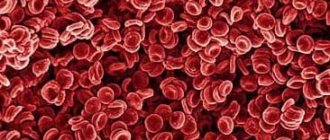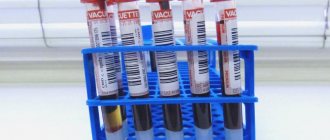There is an opinion among people that it is almost impossible to become infected with HIV through oral sex.
This thesis guides teenagers who avoid the risks of vaginal sex.
So are adult men and women, who usually have their own preferences in choosing a method of intercourse.
However, years of research show that unprotected oral sex is not so safe.
HIV is still transmitted through such contacts.
How high is the risk, what does the danger depend on and whether it can be reduced to zero - read below.
Am I required to disclose information about my diagnosis?
One reason to tell your sexual partners that you have HIV is to protect them from contracting the virus. If you use a condom or your viral load is below detectable levels and your partner is using PrEP, this precaution may seem unnecessary. It may also not be of much importance from a health or interpersonal perspective. However, there is also a legal reason why disclosing this information may be very important. In many states (***as well as in Russia) there are laws requiring information about one’s HIV status, and in some states this obligation applies regardless of whether the partner became HIV-positive as a result of contact or not. You need to be aware of the laws in your state to avoid breaking the law.
Advanced stage of HIV infection and oral sex
In people with a long history of infection and/or active replication of the virus in the blood, sooner or later it begins to be detected in all biological fluids.
Including in saliva.
By this time, immunity is usually so reduced that it is not able to disinfect the oral cavity on its own.
Here we can draw an analogy with a high level of viral load, which will also be true.
Under such conditions, infection can occur even without the presence of open wounds and erosions in the oral cavity.
Naturally, people with wounds on the genitals are at greater risk of becoming infected.
Now will I be forced to use a condom for the rest of my life?
No. You can have sex without a condom if the risk is low, especially if your viral load is below detectable levels and your partner is using PrEP. Jeremiah Johnson, coordinator of HIV prevention, research and policy at the Active Treatment Group, points to two studies - HPTN 052 and PARTNER. According to the results of these studies, not a single new case of infection was identified during contact with HIV-positive partners whose viral load was below a detectable level. A Kaiser study was conducted in San Francisco that studied serodiscordant couples over several years. During this time, not a single case of HIV transmission was identified if an HIV-negative partner used PrEP.
Bleeding ulcers and sores in the mouth
It is not difficult to guess that if an HIV-positive partner has fresh injuries in the mouth or ENT organs, then there will be an admixture of blood in the saliva.
And, accordingly, it contains HIV virions.
In this regard, people who have recently had piercings, had their teeth treated, or had their tonsils removed are dangerous.
That is, everyone we have already listed in the section above.
If the mucous membranes and skin of the giving partner remain intact, then the risk is low.
But when is the surface of the genital organs provoked by inflammation (STI) and other negative phenomena?
Then even a small admixture of blood in the saliva can play a role, causing infection.
Clinical observations show that it is STIs, or rather the inflammation caused by them, that are the main factor reducing resistance to HIV.
Particularly dangerous in this regard are herpetic eruptions and syphilitic ulcers.
They represent an almost open wound surface.
So I can throw away the condoms?
You shouldn't do this (unless they are past their expiration date). Even if you and your sexual partners believe that no additional protection is required to prevent HIV infection, there are a half-dozen other sexually transmitted infections. A condom can protect against these diseases. Remember, many people with STDs don't even know they have them. Gonorrhea or syphilis can have very serious health consequences. Last year, there was an outbreak of syphilis affecting the eyes among mostly HIV-positive gay men, leaving some blind. Having HIV does not protect you from contracting other diseases (or even a different strain of HIV). Moreover, it makes you more vulnerable to such diseases.
Risk groups and likelihood of infection
As of the first half of 2021, 1,272,403 HIV-infected citizens were officially registered in the Russian Federation, including 293,960 deaths.
Distribution by gender and age:
- Among HIV-infected people, men predominate - 62.9%
- Among men aged 35–39 years, 3.3% are infected with HIV, i.e. every thirtieth.
- Among people aged 15–49 years, 1.2% are infected with HIV, i.e. approximately 1 in 100.
As for risk groups and the likelihood of infection, the statistics are as follows:
- 53.5% of patients were infected through sexual contact, of which 2.1% were persons of non-traditional sexual orientation.
- During drug use – 43.6% of cases.
- Children born from an HIV-infected mother – 1.4% of cases.
- During the provision of medical care – 12 cases of suspected HIV infection.
According to the State Budgetary Institution of the Sverdlovsk Region “Sverdlovsk Regional Center for the Prevention and Control of AIDS and Infectious Diseases” in the city of Yekaterinburg, the proportion of different age groups among newly identified individuals in 2021 was (%):
- at the age of 30-39 years - 46.2%;
- at the age of 40-49 years - 26%;
- at the age of 20-29 years - 15.7%;
- aged 50 years and older - 10%.
In 2021, among newly identified cases of HIV infection in Yekaterinburg, 53.7% of people were infected through sexual contact, and 44.4% through drugs.
Thus, at risk are citizens who are sexually active, ignoring the use of a condom. They are followed by drug-addicted patients who use unsterile instruments to administer psychoactive substances. In both cases, these are mature citizens, mostly men.
What about oral sex?
When former TV star Danny Pintauro announced his diagnosis, he suggested that he had contracted HIV through oral sex. After this, alarmists began to theorize about the dangers of fellatio. However, there was no information in the media that Pintauro's body was depleted of methamphetamine, and there were open wounds in his mouth during the contacts in question. Jeremiah Johnson stated, “In 2014, the Centers for Disease Control and Prevention conducted a systematic review of existing research to estimate the risk of HIV infection from specific sexual acts. They concluded that the risk of contracting HIV through oral sex is relatively low. In their findings, they referred to a study of heterosexual couples with opposite HIV statuses, which was conducted over 10 years in Spain. "In the study, there were no new infections after nearly 9,000 acts of oral sex." (By comparison, according to a CDC study, the passive partner who engages in homosexual intercourse without using a condom faces a 138 per 10,000 risk of infection.) If HIV wasn't passed on to a partner through oral sex in 9,000 cases, I think you're safe. The risk of HIV transmission increases when you ejaculate during oral sex; but you can minimize it to almost zero if you manage to “break” contact in time. At the same time, the risk of infection during cunnilingus is extremely low, but only if the HIV-positive recipient is not menstruating at the time of the act.
Can I have children?
Yes. Medicines can reduce the risk of mother-to-child transmission of HIV during pregnancy and childbirth to less than one percent. Before fertilization, the sperm of an HIV-positive donor must be cleared of the virus. The main difference will be that you will need a specialist in HIV, fertilization and childbirth. Recently, doctors have been recommending PrEP to prevent partner infection in couples who are trying to conceive. If you want to adopt a child or obtain guardianship, there are protective measures for HIV-positive parents so that your interests will not be infringed.
What exactly should I tell health care providers if conservative treatment is necessary?
Dr. Robert J. Frassino, founder of the AIDS Foundation of his own name and an expert on the Body.com project, said that all health care professionals use “universal precautions” to prevent blood-borne diseases such as HIV and hepatitis S. Frassino recommends informing your dentist about your status, as he may notice pathology in the oral cavity that is associated with HIV. “If your dentist or other specialist knows about your underlying medical conditions (diabetes, cancer, HIV, etc.), then he can more accurately identify typical problems,” Frassino writes. “Why not tell your dentist about your HIV status? If you feel that your dentist will discriminate against you because of your HIV infection, then you won't want to be treated by him anyway, right? There is no reason to be ashamed of being HIV positive. This is a viral disease." The same applies to doctors of other specialties: you are not required to disclose your diagnosis, but it is in your best interest to do so.
How to get tested for HIV?
– There are several types of testing, but the simplest is a rapid test. It detects the presence of antibodies to HIV infection in saliva in a few minutes,” explains Nikolai Lunchenkov. – There is a huge amount of antibodies in saliva, and to HIV (if it is in the body) too. Antibodies are proteins secreted by immune cells to neutralize pathogens and viruses.
One line means a negative result, that is, the absence of antibodies (and therefore HIV). However, you need to keep in mind that in the first month after infection, the result may be false negative due to the fact that antibodies have not yet developed. The presence of two strips does not guarantee that there are definitely antibodies to HIV, but this is a good reason to be rechecked at a specialized center by taking a blood test. There are two types of analysis: by detecting antibodies or through PCR (allows you to detect the RNA of the virus).
– It is worth remembering about the so-called “window period”, when the infection occurred recently and antibodies have not yet been developed (they appear approximately four weeks after infection). In this case, a test for determining antibodies is useless; it is better to use the PCR diagnostic method, says Nikolai Lunchenkov. – But it will take about a day. When a patient consults a doctor for post-exposure prophylaxis, he is immediately tested for HIV, but only to rule out that the person was not infected long before unprotected contact. This is important because the tactics for treating chronic HIV infection and preventing it are different.
How can a drug user reduce the risk of transmitting HIV and hepatitis?
You can reduce the risk of HIV infection during parenteral administration of any drug by: Using each time the drug is administered, a new, previously unused syringe and needles, or only your “personal” syringe and needle, which no one else has used. This can be achieved by using new sterile instruments each time. The most effective method to prevent the transmission of HIV from syringes and needles is the use of syringes that self-destruct after a single use. Reuse of such syringes is impossible and therefore they can no longer participate in the transmission of infection. When administering the drug, use a syringe and a needle that has been pre-treated with prolonged boiling or disinfectants. Using for administration a solution of the drug prepared under conditions that exclude the contact with the blood of another person. By boiling the drug solution immediately before administration, without washing your individual syringe in the same container with syringes used by other people.
Routes of transmission of HIV infection
Typical questions and answers to questions about HIV/AIDS.
Academician V.V. Pokrovsky answers the questions.
How can you become infected with AIDS?
Of course, they are not infected with AIDS (immunodeficiency), but with the virus that causes it (HIV). To infect a person, HIV must be transmitted to that person from another previously infected person. This can happen during sexual intercourse. This is the most common and natural route of HIV transmission. In addition, infection can occur when blood infected with HIV enters the internal environment of an uninfected body. This occurs when blood is transfused from an HIV-infected donor, or when injections are made with needles and syringes that have HIV-infected blood on them. Contaminated blood most often remains on needles and syringes used by drug addicts. There are known cases when similar things happened in the hospital if doctors did not follow the precautionary rules. Finally, HIV can be passed from an infected pregnant woman to her unborn child. HIV is not transmitted by other means
How do you get infected with HIV through drug use?
Most often, drug addicts become infected with HIV due to the fact that they use the same syringe and needle. First one gets pricked, then the second one, and a little blood of the first one remains in the needle and syringe. If there is any virus in the blood of the first one, the second one gets it too. This is how not only HIV is transmitted, but also viruses that cause hepatitis (inflammation of the liver) - hepatitis B and hepatitis C viruses, and many other microorganisms. HIV and other viruses can also get into the drug solution. If someone has already “tried” this solution, and for this purpose he got into it with his dirty syringe. Sometimes drug addicts wash their syringes in the same container, without fear that HIV will get into the washing water. It turns out that they do not wash the syringe, but, on the contrary, infect it with HIV.
Can a drug be contaminated with HIV?
When purchasing a drug solution, you can never be sure that someone has not tried it and thus infected you with HIV or hepatitis viruses.
If HIV lives in a person’s blood, then why is it in the vaginal fluid and sperm, in breast milk?
All fluids that the human body produces are “products” that come from human blood. Cells in which HIV parasitizes pass into all these fluids from the blood.
Is it always possible to become infected with HIV through contact with fluids secreted by an infected person?
HIV not only needs to somehow “get out” of an already infected body, but also penetrate into a new victim. It is not so easy to move to another person with HIV, because the CD4 cells that he needs to reproduce are located in the deep layers of the skin, in the blood. Because of this, HIV is not transmitted through everyday contact by shaking hands, hugging, or similar contacts. Even if blood contaminated with HIV comes into contact with intact skin, infection does not occur. The top layer of skin, which, among other things, contains special protective substances, serves as a barrier to HIV. Sexual intercourse is a different matter, because it always involves tiny, sometimes invisible wounds, and in addition, infectious material, sperm or vaginal discharge, is also rubbed into these wounds. Inflammatory diseases of the genital organs also contribute to HIV infection. Cells carrying CD4 accumulate in areas of inflammation. Inflammatory ulcers are the gateway for HIV to enter.
How long does HIV continue to act outside the body and is it possible to become infected with HIV through contact with dried blood?
HIV remains active in frozen blood cells and sperm for many years. And dried blood can remain “alive” for several weeks. Therefore, it can survive for quite a long time, for example, in a syringe with which an HIV-infected drug addict injected himself. Hepatitis viruses live even longer.
For this reason, it is better not to touch blood in any form without rubber gloves. Linen that has come into contact with blood or other liquids must be boiled. Used plastic syringes and needles cannot be reused! Glass syringes and needles that have been used by other people must be boiled for at least two hours before using them again, but this may not protect against the hepatitis virus.
Is it possible to become infected during first sexual contact?
The first sexual contact for men is no less dangerous than any other, and for girls it is even more dangerous, since it usually involves more injuries. And wounds, as we have already said, are gateways for HIV.
Does a condom help protect against AIDS and does it provide a 100% guarantee of safety?
A condom significantly reduces the likelihood of infection, but, unfortunately, does not provide a 100% guarantee. The fact is that even the best quality condoms sometimes break or slip off. To reduce the likelihood of rupture, it is necessary to use condoms that have not expired.
In addition, you need to pay attention to whether the packaging is damaged
Condoms that are stuck together, damaged or torn must not be used! It is dangerous to open the package with sharp objects, as this can damage the condom and cause it to break.
You should not use condoms without lubricant, this also increases the likelihood of rupture.
You can't use the same condom twice, it will definitely break.
To reduce the likelihood of slipping, you need to put the condom on the already erect penis, but before it comes into contact with the partner’s body.
After ejaculation, the condom must be carefully removed from the still erect penis, so as not to spill its contents, tied in a knot, wrapped in paper and thrown away.
If the condom breaks, you need to wash the genitals with a weak solution of potassium permanganate, or vodka diluted in half with water, or just rinse well with water. This will reduce the chance of infection.
How do birth control pills work and do they protect against HIV infection?
Birth control pills only affect the process of egg production and therefore do not protect against HIV infection at all.
There are special ointments and liquids on sale that say they kill HIV. Is this really true?
These solutions and ointments kill HIV only in experiments conducted in the laboratory. There is no reliable evidence that they kill HIV in natural conditions. Therefore, it is better to use them together with condoms. Many such solutions, especially those containing chlorine compounds, cause irritation and ulcers on the genitals. Well, ulcers, as you know, are the gateway for HIV.
Does saliva inactivate the virus?
Saliva contains substances that destroy HIV. But they are apparently not enough to prevent HIV infection from contact between the genitals and the mouth. One American, out of fear of AIDS, limited himself to only this type of sex, but still became infected. Therefore, condoms with aromatic additives, mint, orange, etc., are on sale.
Can a person become infected with the AIDS virus by kissing?
There is no risk of infection when kissing on the cheek or forehead. Kisses on the lips can also be different: if during a kiss lovers bite each other until they bleed, or one of them has bleeding gums, there is some minimal risk of transmitting HIV and viruses that cause hepatitis. But reliable cases of HIV infection through kissing have not yet been registered.
Can HIV exist in the air?
HIV does not fly through the air. None of those who breathed the same air as people infected with HIV in the same, even the most cramped, room became infected with HIV.
Can HIV be transmitted through food and drink?
HIV does not spread through food and drink. No one who ate food prepared by HIV-infected cooks became infected.
Do high temperatures destroy HIV?
Temperatures over 100 degrees per minute kill HIV. Even at a temperature of 56 degrees, HIV dies within half an hour. However, inside the human body a constant temperature remains within 35-45 degrees. Therefore, not even the hottest bath kills HIV in the blood and internal organs of an infected person.
Among people of which ethnic groups are there the most HIV carriers?
The virus does not care what ethnic group a person belongs to (that is, what language he uses and what religious customs he observes). Linking HIV/AIDS to specific population groups can lead to tragic consequences. Thus, in South Africa, until 1991, HIV was detected only in white homosexual men. Therefore, the black population of South Africa thought that AIDS was a disease of white people, and did not take any precautions. Therefore, by 2000, it turned out that almost every fifth black resident of the country was already infected with HIV.
Who is most susceptible to HIV/AIDS?
The risk of contracting HIV, and therefore the risk of developing AIDS, varies among different population groups during different periods of the epidemic. HIV spreads earliest and fastest among homosexual men and among intravenous drug addicts and prostitutes. But then the entire population is at risk. In Russia, homosexual men were the first to become infected with HIV, then an epidemic began among drug addicts.
And now HIV threatens EVERYONE equally!
Can infection occur through touching while dancing or in the gym?
Can not. But if injuries accompanied by bleeding occur during exercise, the blood must be handled very carefully.
Is it possible to become infected with HIV through food and dishes?
It is forbidden. None of those who ate from the same plate and drank from the same cup with HIV-infected people became infected.
What to do to avoid getting infected with HIV?
In order not to become infected with HIV, you must, firstly, not have sex with just anyone. It should be taken into account that drug addicts, homosexuals, prostitutes and generally more sexually “experienced” people had a greater risk of “catch” HIV, hepatitis viruses, syphilis and other sexually transmitted diseases. At the same time, of course, in some cases it is difficult to find out anything about the past of specific people. The ideal, of course, is to find a friend who has not yet become infected with HIV, and with whom you could then live your whole life. But in order to be completely sure, you need to be tested for HIV with him. If this does not work, you need to remember to use a condom. When going on a date that could go far, you need to stock up on condoms in advance. It's better to always have them with you.
What should you not be afraid of that does not pose a risk of contracting HIV?
The routes of HIV transmission are limited, so there is no need to be afraid of accidental, everyday HIV infection. Even if an HIV-infected person is next to you, this will not lead to infection. In the United States, doctors examined thousands of families where HIV-infected people and AIDS patients lived. It turned out that none of those who used the same dishes, the same toilet, bathtub, none of those who slept in the same bed with an HIV-infected person (and in the USA in poor families they sleep in the same bed), but did not have sexual contact with infected with HIV, did not become infected. None of those who used the same toothbrush became infected.
If your partner has AIDS, what is the likelihood of getting infected from him?
If your sexual partner has AIDS or is just infected with HIV, you can still get infected from him. The likelihood of infection depends on many factors, such as the amount of HIV in the partner’s blood, ulcers and inflammatory diseases of the genital organs in both partners and many others. For this reason, sometimes infection can occur during a single sexual intercourse, and sometimes sexual partners live together for years before infection occurs.
If an HIV-positive person takes antiretroviral drugs correctly, the risk of contracting HIV from them is significantly reduced. This risk is further reduced if you take antiretroviral drugs yourself (pre-exposure prophylaxis).
However, antiretroviral drugs only protect against HIV infection and do not protect against infection by other viruses. Therefore, when having sexual intercourse with an HIV-positive person, if you do not want to become infected with other infections, it is recommended to use condoms.
What to do if you have sexual contact with a person whose HIV status is unknown?
After sexual contact with an unknown person, including after rape, to prevent HIV infection, you can take antiretroviral drugs according to the regimen recommended by a specialist doctor at the local AIDS center
Can you get HIV from getting a tattoo?
Tattooing, ear piercing, piercing and similar fashion procedures are dangerous as they are often performed with dirty instruments. Who can be sure that an HIV-infected fashion lover has not been stabbed with the same needle before?
When providing first aid to an injured person who is bleeding, can you become infected? I heard that a doctor helping a sick person in the ring can get infected?
There appears to be a risk of contracting HIV from blood contact, although there have been no documented cases of HIV infection from washing or dressing wounds. There is a much greater risk of becoming infected with viruses that cause hepatitis. Therefore, if someone else's blood gets on the skin, you need to wash it off as soon as possible (if you have soap, then with soap). If blood gets into your eyes, they should also be rinsed quickly with clean water.
Artificial respiration is best done through a handkerchief or other fabric.
Can you get infected with HIV through human or animal bites?
Animals cannot be infected with the human immunodeficiency virus, which means they cannot infect humans. But from their bites you can become infected with some other infectious diseases: rabies, “rat bite disease”, “cat scratch disease”. Therefore, if you are bitten by animals, you should consult a doctor.
As for bites from a person infected with HIV, the risk of infection is very small. Fortunately, people bite much less often than animals. But if this happens, then to prevent HIV infection, you can take antiretroviral drugs according to the regimen recommended by a specialist doctor at the local AIDS center
Can a person become infected if he shares a razor with an HIV-infected person?
If a person's blood remains on a straight razor or blade, then cutting another person can become infected with viruses. So it is not safe to share a razor with anyone.
How do children become infected with AIDS?
HIV is transmitted to a child from an infected mother during pregnancy, childbirth and breastfeeding. If the mother is infected. The probability that a child will be infected is 25-30 percent. Taking antiviral medications, prohibiting breastfeeding and some other techniques can reduce the risk of infection of a child from the mother to 1%.
That is, without examination and treatment of the mother, one or two out of four children born to HIV-infected mothers are born infected, and with appropriate treatment of the mother, only 1 in 100.
Is it true that drug addicts are most often infected with AIDS, why?
Drug addicts often exchange syringes, draw drugs from the same container, and therefore HIV from the blood of an infected drug addict can easily enter the blood of another. If HIV-contaminated blood gets into a syringe, needle or drug solution, it is then injected directly into another person's vein. The virus doesn’t need anything else: it entered the body of a new victim.
How long can a contaminated needle cause HIV infection?
HIV survives in a needle or syringe for up to a month, and the hepatitis virus even longer. It is best not to touch syringes and needles thrown by someone at all. Disposable plastic syringes are dangerous to reuse, but glass ones must be boiled for at least 2 hours.
If a pregnant woman is infected, will HIV be passed on to the baby?
If a woman does not take precautions, the baby may be born infected with HIV. Pregnant HIV-infected women should take antiviral drugs and should not breastfeed, and then the risk of having an infected child will be significantly reduced
How should I answer the question “Can I become infected with HIV from...”?
Myths are difficult to eradicate, so start by talking about how HIV cannot be transmitted. The virus does not live outside the human body, so you cannot become infected with it in the toilet or by sharing cups or cutlery. You cannot become infected with HIV through kissing or spitting, as the virus is not transmitted through saliva. It is also not transmitted through sweat or urine. You cannot become infected in a swimming pool, hot tub, sauna, mosquito or rodent bite, tattooing, ear or body piercing. A sufficient concentration of the virus is required to infect another person. At this concentration, HIV can only be contained in four physiological fluids: blood, semen, vaginal fluid and breast milk. According to the Centers for Disease Control and Prevention, transmission of the virus from an HIV-positive person can occur when one of these fluids comes into contact with mucous membranes or damaged tissue, or when it enters the bloodstream directly (from a needle or syringe).
High HIV load in active partner
HIV research shows that the activity and aggressiveness of the infection directly depend on such an indicator as the viral load.
This is the number of copies of the virus in 1 ml of blood, calculated using real-time PCR.
In advanced stages of HIV, the number of virions in the blood and biological fluids becomes very massive.
The contamination of lubricant, semen and vaginal discharge increases.
At the same time, the risk of becoming infected during oral sex also increases.
Is there a cure for HIV?
No. There is only one known “cured” patient who continued to live without HIV for more than five years: Timothy Brown, also known as the “Berlin patient.” He was cured as a result of a bone marrow transplant during treatment for cancer. After this case, there were several reports of other people being cured, but these cases were not confirmed by research or did not stand the test of time - the virus reappeared in many people who were considered cured. As David Margolis, head of the End AIDS Research Collaborative, explains, “Timothy Brown [was] probably cured, which is wonderful. However, approximately 80 million people have been infected worldwide over the last century. So one chance in 80 million is not too much. This is just a proof of principle that treatment is possible. But I don’t want to disappoint expectations and suggest that we look at the process of finding treatment realistically: this will not happen soon.”
30 years have passed, why is there still no cure?
Dr. Rowena Johnston, vice president and chief scientific officer of the American Foundation for AIDS Research, explains that there are barriers to curing HIV, and almost all of them revolve around “reservoirs,” where the virus is concentrated in the body. Even after the viral load of an HIV-positive person has reached undetectable levels, the virus continues to persist in tissues and organs. Antiretroviral therapy helps suppress new viruses that infected cells produce, but the basis for HIV replication remains the DNA of infected cells. Once treatment is stopped, nothing prevents new copies from appearing, and the virus spreads quickly and unchecked again. Therefore, in order to get rid of HIV, we must find reservoirs. “Discovering all the places in the human body where HIV can hide is like finding a needle in a haystack. The HIV reservoir can be located in any part of the body, such as the brain or intestines. Certain types of cells, including immune cells that circulate throughout the body, can also be reservoirs. We will not be able to eradicate or neutralize the hidden virus until we know its exact location."
Risk of ejaculation
Each episode of oral sex with an HIV-positive man poses a fairly serious risk.
And ejaculation of the inserting partner into the recipient’s mouth increases the risk several times.
And that's why.
The saliva of a healthy person has some protective mechanisms that help inactivate any viruses, including HIV.
This is both the hypotonic nature of saliva and some immunoglobulins contained in this fluid.
However, the virucidal effect is realized too slowly.
And it cannot inactivate all virions that enter the mouth, if there are a lot of them.
This is exactly the case when a man ejaculates into his mouth.
You can't expect that spitting out the sperm rather than swallowing it reduces the risk.
Of course, the longer the seminal fluid stays in the mouth, the greater the danger.
But both of these ways of getting rid of it are imperfect.
Since the biological material of the man remains on the mucous membranes of the mouth.
What will be required for treatment?
Jerry Zack, a doctor at the David Geffen School of Medicine at the University of California, explains that HIV can "sleep" in these reservoirs, and because it doesn't reproduce, doctors can't detect it or treat it. To get rid of the virus, doctors need to find ways to activate such reservoirs to make them visible to treat HIV patients who are receiving antiretroviral therapy. For this purpose, “latency reversing drugs” are used. Regardless of the method of “switching on” latent reservoirs, it is necessary to avoid deterioration of the condition of patients with a viral load below detectable levels. According to Dr. Zack, once the virus becomes visible, the next step is to develop methods to clear infected cells and eliminate sources of HIV from the body. He claims this should lead to “eradication of the infection,” but real-life examples, such as the Mississippi child, show that even at low levels, the virus can later rebound and restart the infection over and over again. A Mississippi baby was born HIV-positive but began receiving antiretroviral therapy immediately after birth. He was later considered healthy and the drugs were stopped. However, the virus has returned. Therefore, Dr. Zak explains, any cure for HIV needs "some additional protection" that will destroy the virus if it remains latent and is reactivated later. Many researchers are working on different aspects of this complex approach, and every year new discoveries bring us closer to discovering a cure for this disease.
What effect does HIV have on the human body?
HIV is a human immunodeficiency virus. Once in the body, it attacks the cells of the immune system, causing the development of HIV infection. It slowly progresses, destroying more and more immune cells. As a result of its exposure, the human immune system is almost completely destroyed and loses its ability to protect the body from the harmful effects of internal and external factors. Acquired immune deficiency syndrome (AIDS) develops, which is the terminal stage of HIV infection. At this stage, the body’s immune system is already so weakened that it is unable to resist opportunistic infections (bacteria, fungi, protozoa), which the body of a healthy person can easily cope with. Reduced resistance to infection in the absence of timely measures leads to death.
Thus, a person does not die from infection with the immunodeficiency virus, the development of HIV infection, or even from AIDS as such. And from the development of complications that the immune system of the infected patient is unable to resist. This could be tuberculosis, pneumonia, meningitis and even common herpes. The only way to avoid complications is to undergo highly active antiretroviral therapy (HAART). Taking antiretroviral drugs inhibits the multiplication of HIV in the cells of the immune system, thereby supporting its functions to protect the body. The prescribed medications are taken for life – every day at the same time. Thanks to this, HIV-infected patients live for decades.


![Table 2. Hemodynamic definition of PH (adapted from [2] with modifications)](https://ms-pi.ru/wp-content/uploads/tablica-2-gemodinamicheskoe-opredelenie-lg-adaptirovano-iz-2-s-izmeneniyami-330x140.jpg)







